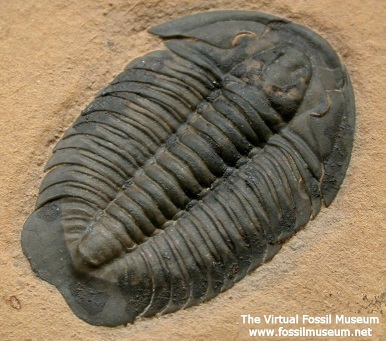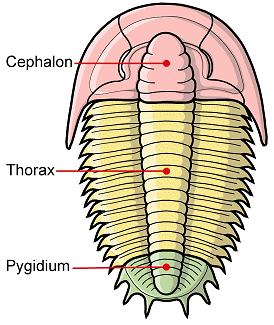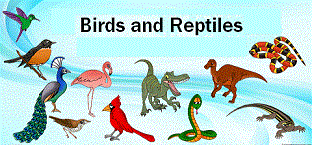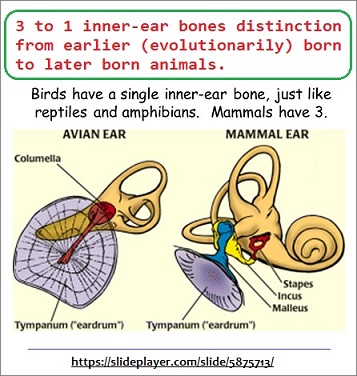(or Triads, Trimurties, Triple Deity, Triunities, Trebles, Triangles, Triskelions, etc...?)
Correlations, Coincidences, or Compatible connections of a comparative cognition?
| 1st of 1st | 2nd of 1st | 3rd of 1st |
| 2 | 3 | 4 |
| 5 | ||
~ The Study of Threes ~
http://threesology.org
An excursion into a discussion of "three" as both a quantity and quality, necessarily involves a reference to religious-based groups-of-three such as the Christian Trinity and Hindu Trimurti, though we might well include more ancient pantheons of gods or mythological creatures (both human and otherwise), even if peoples in the past did not use the words "Triad, Trinity, Trio, Trimurti" etc... Such a discussion also lends itself to being examined from various alternative perspectives, one of which is mathematical set theory, though its tradition has adopted the mind-set that it is not conventionally applicable to ordinary experiences (for example, three clothing sizes of small-medium-large (and the extended sizes beyond the "large" coupled to a 1X-2X-3X layout), the three-based fast food restaurant combo-meal of sandwich-drink-side order, knife-fork-spoon eating implements, etc..), such as these and others I will describe and therefore refute the ascribed set theory notion explicated as:
Set theory is a branch of mathematical logic that studies sets, which informally are collections of objects. Although any type of object can be collected into a set, set theory is applied most often to objects that are relevant to mathematics. The language of set theory can be used in the definitions of nearly all mathematical objects. Source: Wikipedia: Set Theory |
Just because one might personally encounter a common run-of-the-mill University Mathematician who is so arrogantly lofted in their opinion of themselves and their applied perceptions, doesn't mean the recurrences of sets of one or another number pattern found in multiple subject areas doesn't constitute a cognitive equation that they neither know how to perceive, much less interpret and then describe as a mathematically illustrative paradigm related to evolutionary development, growth and an eventual definitive for further consideration.
While mathematicians are noted for their ability to decipher analytical abstractions, this doesn't automatically mean they can perceive all abstract simplicities staring them in the face simply because they confine their interests to a single subject or only a few taught to them in a College setting. A wider breadth of knowledge would enable them to apprehend commonalities of cognitive occurrences susceptible to mathematical indices, since many of them... such as superstitions, already lend themselves to being labeled numerically. And as such, the fact that only a few numbers are being continually referred to one generation to the next, is indicative of a "set" of number references related to cognition that is related to influences that like-wise repeat, and if such influences are deteriorating, than so will these and other "sets" of one, two, three, four, five, six, seven, eight, nine, etc.. Putting such numerically identifiable occurrences on a graph details a closer look at human cognition. The implied psychological depths and dimensions of human cognition set into a system of mathematical referencing is far removed from typical mathematical inquiries. For example, the dimension of counting games used by children have a repetitive frequency that can be deduced as a product of linguistic matrices linked to auditory controls subject to physiological imprints and often as a result of adult additions. The enumerations we can decipher are coordinates enabling us to construct a map of human cognition by developing a relevant graphing system.
A bit of history concerning "Set Theory" is appropriate at this moment because its development and acceptance as a relevant mathematical discipline has historically met with opposition, similar to the opposition which has been confronted by those attempting to establish a "Threesological" set theory discipline as it makes its way through a research and development stage with its own, as yet undefined axiomatic parameters, because the formation of such requires the participation of a much broader collection of information reduced to numerical indices portraying a recurrency of cognitive application in seemingly divergent areas of human orientation that can offer applicable information for multiple disciplines such as Philosophy, Psychology, Sociology, Music, Literature, script writing, motion picture direction, character development, Political Science, protest options, Surveillance, Military Science, Computer programming, etc...:
Set theory, (is a) branch of mathematics that deals with the properties of well-defined collections of objects, which may or may not be of a mathematical nature, such as numbers or functions. The theory is less valuable in direct application to ordinary experience than as a basis for precise and adaptable terminology for the definition of complex and sophisticated mathematical concepts. Between the years 1874 and 1897, the German mathematician and logician Georg Cantor created a theory of abstract sets of entities and made it into a mathematical discipline. This theory grew out of his investigations of some concrete problems regarding certain types of infinite sets of real numbers. A set, wrote Cantor, is a collection of definite, distinguishable objects of perception or thought conceived as a whole. The objects are called elements or members of the set. The theory had the revolutionary aspect of treating infinite sets as mathematical objects that are on an equal footing with those that can be constructed in a finite number of steps. Since antiquity, a majority of mathematicians had carefully avoided the introduction into their arguments of the actual infinite (i.e., of sets containing an infinity of objects conceived as existing simultaneously, at least in thought). Since this attitude persisted until almost the end of the 19th century, Cantor’s work was the subject of much criticism to the effect that it dealt with fictions—indeed, that it encroached on the domain of philosophers and violated the principles of religion. Once applications to analysis began to be found, however, attitudes began to change, and by the 1890s Cantor’s ideas and results were gaining acceptance. By 1900, set theory was recognized as a distinct branch of mathematics. At just that time, however, several contradictions in so-called naive set theory were discovered. In order to eliminate such problems, an axiomatic basis was developed for the theory of sets analogous to that developed for elementary geometry. The degree of success that has been achieved in this development, as well as the present stature of set theory, has been well expressed in the Nicolas Bourbaki Éléments de mathématique (begun 1939; "elements of mathematics"): "nowadays it is known to be possible, logically speaking, to derive practically the whole of known mathematics from a single source, the theory of sets." Introduction To Naive Set Theory Fundamental set concepts In naive set theory, a set is a collection of objects (called members or elements) that is regarded as being a single object. To indicate that an object x is a member of a set A one writes x ∊ A, while x ∉ A indicates that x is not a member of A. A set may be defined by a membership rule (formula) or by listing its members within braces. For example, the set given by the rule "prime numbers less than 1" can also be given by {2, 3, 5, 7}. In principle, any finite set can be defined by an explicit list of its members, but specifying infinite sets requires a rule or pattern to indicate membership; for example, the ellipsis in {0, 1, 2, 3, 4, 5, 6, 7, ...} indicates that the list of natural numbers N goes on forever. The empty (or void, or null) set, symbolized by {} or ∅, contains no elements at all. Nonetheless, it has the status of being a set. A set A is called a subset of a set B (symbolized by A ⊆ B) if all the members of A are also members of B. For example, any set is a subset of itself, and ∅ is a subset of any set. If both A ⊆ B and B ⊆ A, then A and B have exactly the same members. Part of the set concept is that in this case A = B; that is, A and B are the same set... Source: Set Theory (Britannica) |
|
This is a typical formula of Numerology: A = 1, B = 2, C = 3... G = 7... T = 20, U = 21, etc... If we numerologically transform the 1st letters of DNA: (Adenine- Cytosine, Guanine/ Thymine) into numbers, we get: {1, 3, 7} and 20. If we do the same for RNA (Adenine- Cytosine, Guanine/ Uracil) we get: {1, 3, 7} and 21. If we add the first three numbers (1 + 3 + 7) we get 11. By adding both elevens: (11 + 11) we get 22. In such an exercise we are not trying to ascribe any meaning to the patterns, just bring them to a conscious light. By adding the "22" to the other two dual numbers, we get a set-of-three referencing the pattern "20, 21, 22". If we wish to make a correlation to some biologically influenced geophysical event(s), we find that the Equinoxes and Solstices variously occur on these numbers during March, June, September and December, or the 3rd, 6th, 9th and 12th months as seen from the Northern Hemisphere. 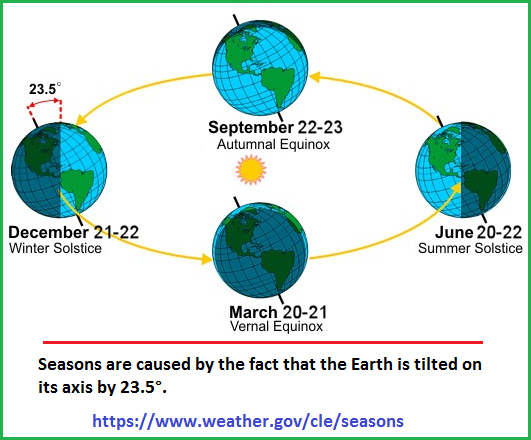 Interestingly, because correlations can be made between geophysical events and biological patterns, in that the environment can affect the biology of how one feels and the biology of life forms can affect the environment, comparisons can be made on different levels, one of which is to transcribe events into numbers from which can be correlated similar and dissimilar patterns which may or may not prove to be a valuable insight into interactive connections concerning conditions we might otherwise overlook or take for granted. Again, I am not (in this moment) trying to ascribe any meaning to the correlations, I am only making a comparison... and sorting different items into categories which appear to be similar. And in this comparison, because I have a street-corner knowledge of biology, we find that the number "23" is missing in the foregoing account of amino acids. This number not only correlates to the number of shared chromosomes for the development of a child in reproduction, but that males and females share 22, with the 23rd having a distinction of individuality.  Let us also note that the tilt of the Earth's axis is (approx.) "23.5°", which provides us with the equation of 23.5 + 23.5 = 47... that is when we correlate the numbers as being references to the quantity of chromosomes. Let us also consider that this amount of tilt may have been slightly less in the past, or even slightly more (mentioned for those who are inclined to exercise oppositional comments to suggestions as if they are considerations that don't come to mind, thus giving themselves some attempted credit for thinking alternatively.) However, in terms of chromosome count, the "47" represents a condition called Trisomy. While there are a few recurring types, Trisomy 21 is most common and referred to as Down Syndrome. With respect to Trisomy 18, there are three forms: Full, Partial, and Mosaic. 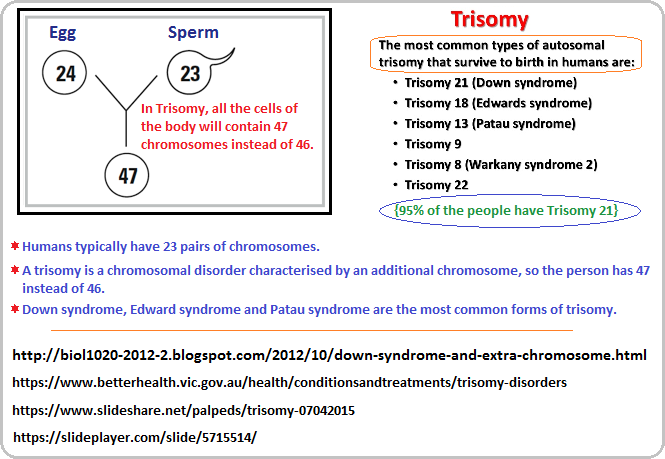 Yet, let us do a bit of speculation with respect to the correlations involving the 23.5° tilt of the Earth's axis and the 23 chromosomes value, though it is said that the tilt oscillates between 22.1° and 24.5° at an (approximated) 41,000 years cyclical rate. If we add the variable that the planet's rotation speed was faster in the past during the stages of development called the primordial soup (or broth), and consider that the tilt may have been coupled to a cyclical rate of the Earth's spin acting as a type of experimenter's centrifuge, conditions for the origin of life would necessarily have also had an influential "three" patterned occurrence to account for the triplet codes found in DNA and RNA... such as in the metaphor where the early building blocks of like were like a pagan culture which worshiped the Sun... a Source of warmth, light and energy coupled to three-patterned stroboscopic dawn-noon-dusk repetition if we consider the rate of rotation was on the order of from a 2- to -8 hours cycle. If so-called multi-celled and complex humans can come to worship the Sun with its three moments and derive the notion of a Trinity from it or create a pantheon of three Hindu gods, (etc...), then it is not too difficult to consider that the early and sensitive materials of evolution might well have also been. 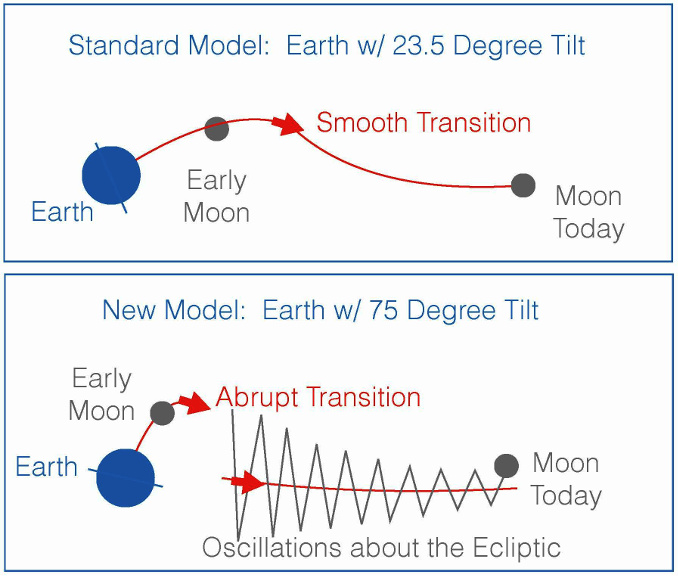
Further more, in this imaginative exploration of numerical correlations, if we associate the evolutionary development of the different life forms to different rates of rotation occurring over billions of years, we find humanity having arisen when the rate of rotation was in the 23 hour range, just as the Cambrian Explosion of life forms. Hence, let us ask the pointed question: Are Humans rotation-rate specific? If we are rotation rate specific and arose when the Earth's rate of rotation was 23 hours in duration, then the human species may not be able to survive on an earth with a rotation rate that is 24 or more hours in duration. There may be a built in biological limitation which will create an internally-directed extinction of the species long before the Sun burns out or the planet's resources are used up. If this is true for other life forms, then what will occur when the rotation rate changes as the Earth slows down... thus suggested as a factor which alters gravity, the incidence of solar irradiation and oxygen content of the atmosphere (because oxygen-producing life forms are affected)? How will this affect the axial tilt and how will this affect chromosomal counts? No less, let us suggest that this may have had some influence on the chromosomal count and that with development of chromosomal abnormalities involving a total count of 47, can we not ask if the change in the tilt is a representative image of a causal occurrence that affects those who are more sensitively susceptible to environmental changes, but that all of humanity may eventually be susceptible, resulting in a greater incidence of different chromosomal-"correlatable" occurrences... unless humanity can adapt to a slowing rate of rotation of the Earth, a slowing which may have an effect on the tilt, just as a fast spinning Earth may have had an effect on its relationship with the Early Moon billions of years ago and vice versa? In fact, there is a scenario of consideration concerning the topic of whether Earth spun on its side or not because of an accelerated rotation rate: Did the Early Earth Spin On its side?Were life forms more or less susceptible to environmental changes in the past? Will the presumed susceptibility increase in the future unless a species-wide adaptation takes place? 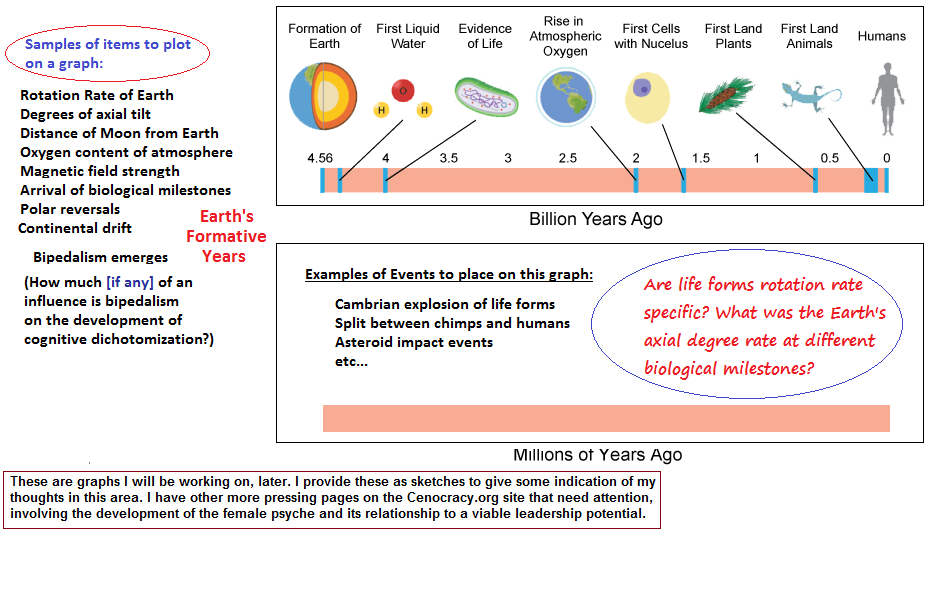 However, instead of "susceptibility" to environmental events which can cause changes in genetics, the ideas of random mutation an genetic drift are most often used to explain biological events instead of using these ideas to denote changes in susceptibility. In other words, mutations have to occur because of a susceptibility to changes, and this susceptibility has to be the result of an inherent design and/or due to chance. Another interesting aspect of correlating numbers in genetics (biology) is the finding that while humans have 23 (46) chromosomes, their so-called closely-related genetic cousins have 24 (48). A chromosome fusion is being used to form the opinion that determines the differences in our lineage. However, while we can say it occurred after the great apes split, we do not know exactly when it began, much less tell what environmental conditions existed afterwards, in terms of the Earth's rotation rate, exact content of atmospheric oxygen, how much axial tilt of the Earth existed, magnetic field strength (available but not yet discerned in conventional appraisals of Paleomagnetic formation?), solar flare events, etc... and can we learn anything from looking at present day as well as ancient myths discussed in terms of the The Earth Before the Flood. If the last common ancestor of chimps and humans occurred as early as 13 million years ago during the Miocene, how fast was the Earth spinning (not only acting as a type of laboratory centrifuge, but as an indicator of how fast the three-pattern Sun: dawn-noon-dusk was "flashing" like a strobe light)... and how fast is its fusion effects occurring as it proceeds on a path to becoming a red giant, is thought by some to be on a course which will consume the inner most three planets. In any event, in correlating the number "three" found in DNA and RNA and considering that this pattern had to be influenced either internally and/or externally, the fact that we can identify the three moments (phases) of the Sun with influencing cognitive phenomena such as the Christian Trinity and Hindu Trimurti (amongst hundreds of other examples found in other subject areas), provides us with a numerically referencing correlation that the Triplet Codon system found in DNA and RNA, as well as the fusion event which occurred with chromosome 2, may well be related and signifies a means by which we can predict future evolutionary events... such as a change in the code and more chromosomal fusion events to occur as adaptive responses to the environmentally-based pressures on biology. |
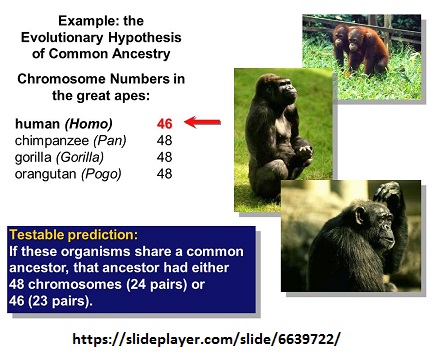
Since the mid-1800s, biologists have generally shared the belief that all living things descended from a single common ancestor. Based on fossil evidence and comparative anatomy, Charles Darwin proposed that humans and great apes—which include chimpanzees, gorillas, and orangutans–share a common ancestor that lived several million years ago. More recent research has propped up Darwin's theory of common descent (also called common ancestry): genome analysis reveals the genetic difference between humans and chimps to be less than 2 percent. In other words, humans and chimps have DNA sequences that are greater than 98 percent similar. While the genetic similarity between human and ape strengthened Darwin's theory, a significant, unexplained discrepancy remained. While great apes all have 48 chromosomes (24 pairs), humans have only 46 (23 pairs). If humans and apes shared a common ancestor, shouldn't both have the same number of chromosomes in their cells? The phases through which chromosomes replicate, divide, shuffle, and recombine are imperfect, as DNA is subject to random mutations. Mutations do not always produce harmful outcomes. In fact, many mutations are thought to be neutral, and some even give rise to beneficial traits. To corroborate Darwin's theory, scientists would need to find a valid explanation for why a chromosome pair is missing in humans that is present in apes. A fundamental part of the process by which science is done involves developing a testable prediction, also known as a hypothesis. Scientists offered two possible explanations for the discrepancy: Either the common ancestor had 24 pairs, and humans carry a fused chromosome; or the ancestor had 23 pairs, and apes carry a split chromosome. Their focused research led them to find a mutation on one human chromosome that explained what had happened. In 2005, a peer-reviewed scientific journal published results of the tests. It turns out that chromosome 2, which is unique to the human lineage of evolution, emerged as a result of the head-to-head fusion of two ancestral chromosomes that remain separate in other primates. Three genetic indicators provide strong, if not conclusive, evidence of fusion. First, the banding (or dye pattern) of human chromosome 2 closely matches that of two separate chromosomes found in apes (chimp chromosome 2 and an extra chromosome that does not match any other human chromosome). Second, a chromosome normally has one centromere, or central point at which a chromosome's two identical strands are joined. Yet remnants of a second, presumably inactive centromere can be found on human chromosome 2. And third, whereas a normal chromosome has readily identifiable, repeating DNA sequences called telomeres at both ends, chromosome 2 also has telomere sequences not only at both ends but also in the middle. |
In referring back to the number values for the DNA and RNA examples, we come up with 1 less then the 64 amino acids detailed to account for the recurrence of the 21 amino acids used by our bodies. (The old view was 20.) In addition, three numbers in each of the sets (1, 3, 7) are the same while one is different, which also gives reference to the fact that DNA has one molecule of oxygen less than RNA. Hence, a 3 -to- 1 ratio patterns emerges that is found also in the set of three Stop codons and 1 Start codon. While we might also provide a reference to the D (right-handed) and L (left-handed) forms as part of a larger pattern that can be included, it need not but be mentioned for the present simple orientation used in the foregoing correlations. And nor do we need to delve into the numerical patterns by applying them to the language of computers whose underlying two-patterned 0's and 1's is accentuated by electronic circuitry combined with the mathematics of boolean logic that is though to be instructive in assisting the development of a three-based (quantum) formula of computing such as might be figured by the example: -1,0,1... though we could indulge in a bit of abstraction and use any form of symbolic referencing system so long as we keep the usage of symbols in a recognized and articulated coherency. As part of the foregoing "numerological" exercise, let us... for the sake of conversation (or devil's advocacy), adopt the view that all of the above is a bit of nonsense numerology presenting us with a set of coincidences due to arbitrarily placed letters and words and a fanciful imagination. Yet, when we find the same patterns occurring in multiple subjects, we will have to similarly advance the view that many people over large expanses of time in different cultures have been deliberately or unknowingly participating in the same type of coincidence-making, including hard-nosed scientists and mathematicians, not to mention the supposed "soft" intellectualisms of theologians, musicians and philosophers who also participate in creating numerous sets-of-three variously labeled. This itself can not be a coincidence... unless of course one wants to label it as such because it presents them with too difficult a problem since a knowledge of multiple subjects is a requirement and mathematicians need only know one... or two... or even three, since such a quantity fits well in their mathematical scheming. It doesn't take a genius to appreciate the about sets-of-three values as a Mathematical variable awaiting a larger theory, but mathematicians are frequently found to be too "humbly arrogant" to look beyond the confines of their immediate domain to fully acknowledge that many mathematical theories await the arrival of application outside the field of mathematics in order to substantiate their value as being more than just another pretty face of mathematically inclined esthetic endeavors to assist a mathematician in carving out their niche' in history as having sculpted a beautiful mathematical masterpiece. |
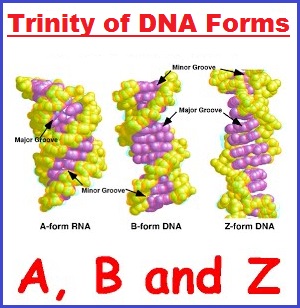 |
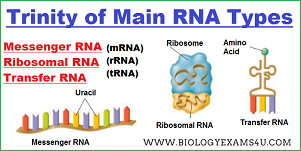
|
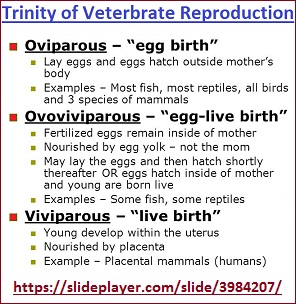 |
 |
Here are a handful of different sets-of-three configuration which contain not only the set (1,2,3), but alternate configurations such as (one, two, many), (three -to- one, three in one, three from one, three as one, three/two, one-two-empty or void, transitions thereof, regressions there of, etc... [in words or numbers or other symbols... sounds... impressions... etc...]). Sometimes the "three" or any reference to quantity is not specifically labeled, or may be inferred such as using words like triad, trinity, treble, triune, triangle, tripod, plurality, Many, etc... In other instances not listed, patterns may exist by inter-mixing sounds, muscle twitches, tastes, odors, feeling, nuances, subtle energies, or the enigmatic "something there" or as a difficult-to-grasp shadow or glimmer or stroboscopic impression, etc... For example, how many record a pattern-of-three upon hearing a dog bark three times, or finding three coins on the ground, or 1st hearing a sound, then seeing a shadow, and 3rdly, in succession, smelling an order? Patterns occurring due to successively different perceptions are not customarily identified nor recorded, though they leave an impression and may well have an effect on behavior, particularly if a person or group of people in the same context have recurring experiences thereof.
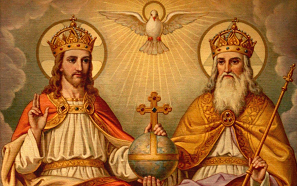 Christianity's 3-in-1 Trinity Christianity's 3-in-1 TrinityOrigin: the Sun + dawn-noon-dusk |
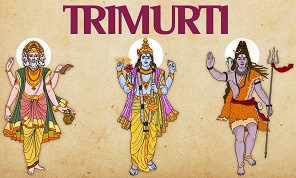 3 faces of 1 god representing creation, preservation and destruction, or dawn-noon-dusk |
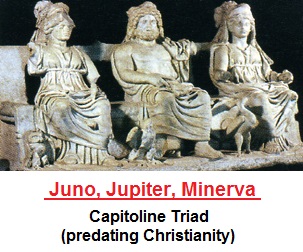 |
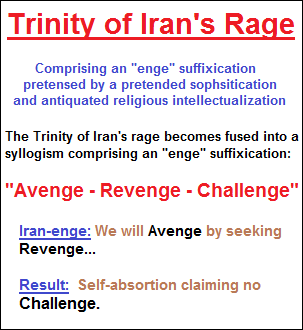 Iran’s dilemma: A military conflict with Israel, yes or no? Iran says response to terrorist attack on military parade will be 'crushing' Will Iran attack Israel over the Syrian conflict? It’s only a matter of time |
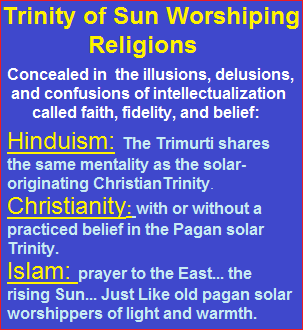 Church Orientation, Alignment and Solar Worship Who changed the Sabbath to Sunday? Religions and Cultures of Moon Worship |
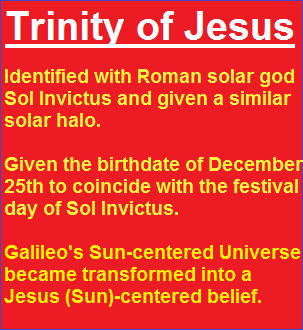 Ancient Sun Worship |
In speaking about a developmental transition, first compare two aquatic life forms and notice that the (older) earlier occurring one has a "two" division body plan while the (younger) later occurring one has a "three" division, and then compare the later arriving developmental sequence of therapods to mammals, with respect to the presence of one inner ear bone for the earlier group to the later born group with a derived three inner ear born structure:
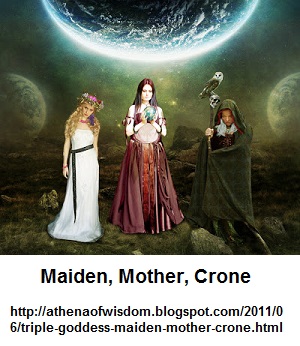 |
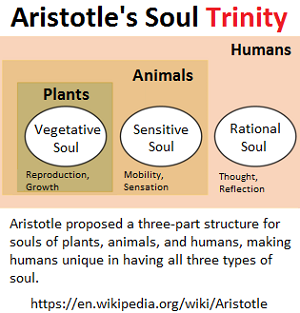 |
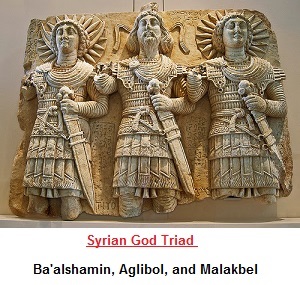
|
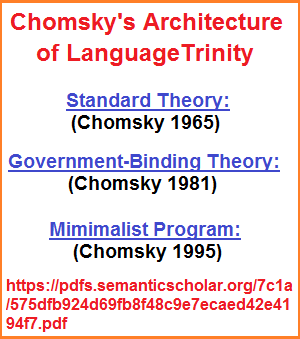 |
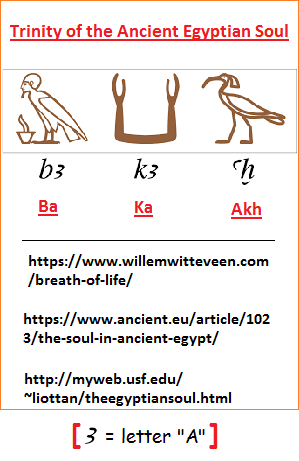 |
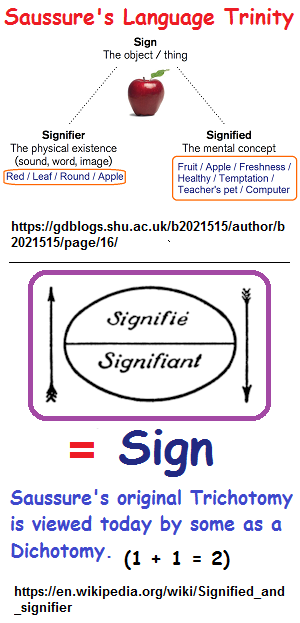 |
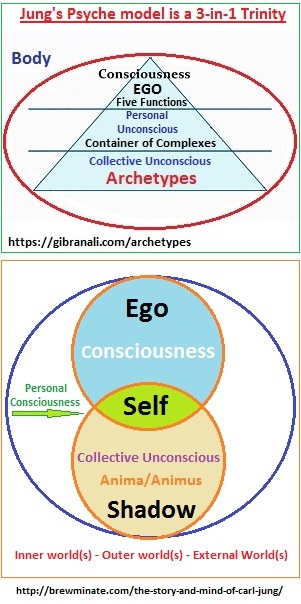 |
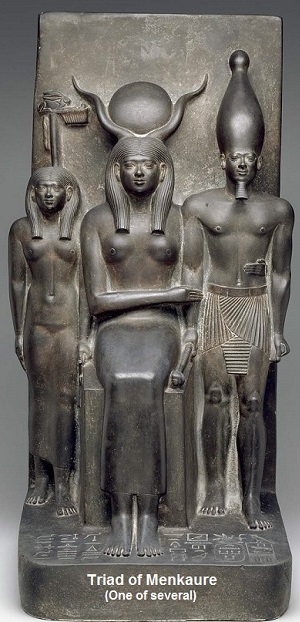 |
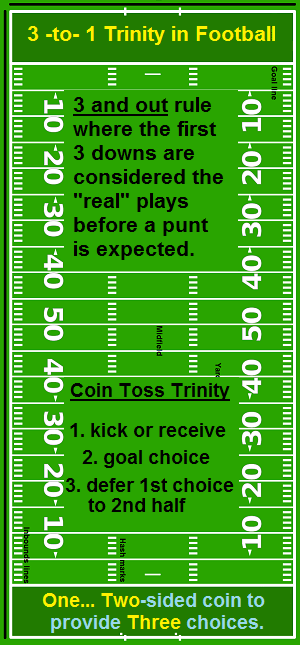 (A Trinity amidst violence, like a medieval Christianity) |
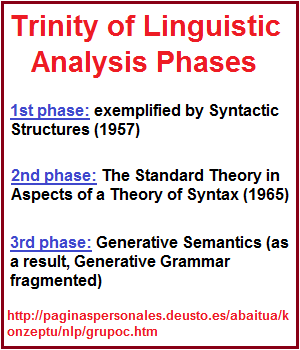 |
 |
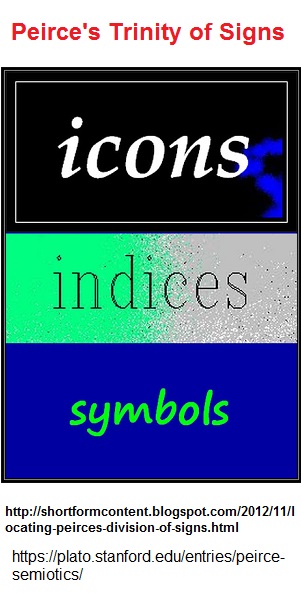 |
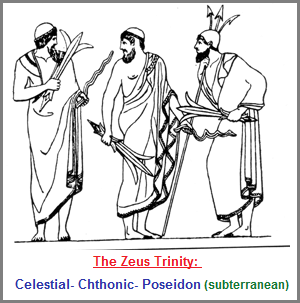 |
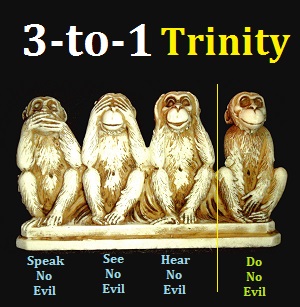
|
 |
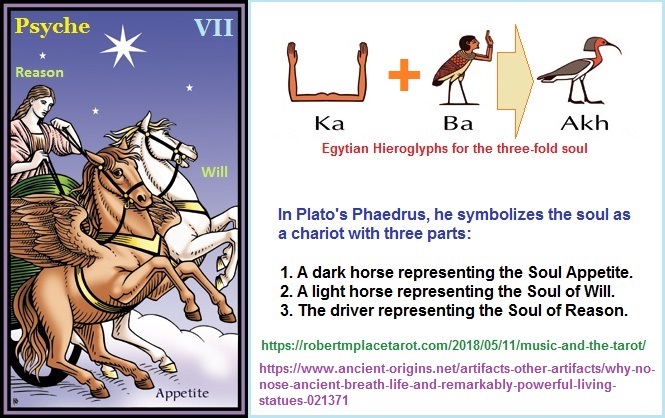 | ||
Page initially created: Friday, 17th August 2018... 4:36 AM
Page initially posted: Thursday, 13th September 2018... 8:33 AM
Updated posting: Saturday, 29th September 2018... 5:25 AM
Herb O. Buckland
herbobuckland@hotmail.com


